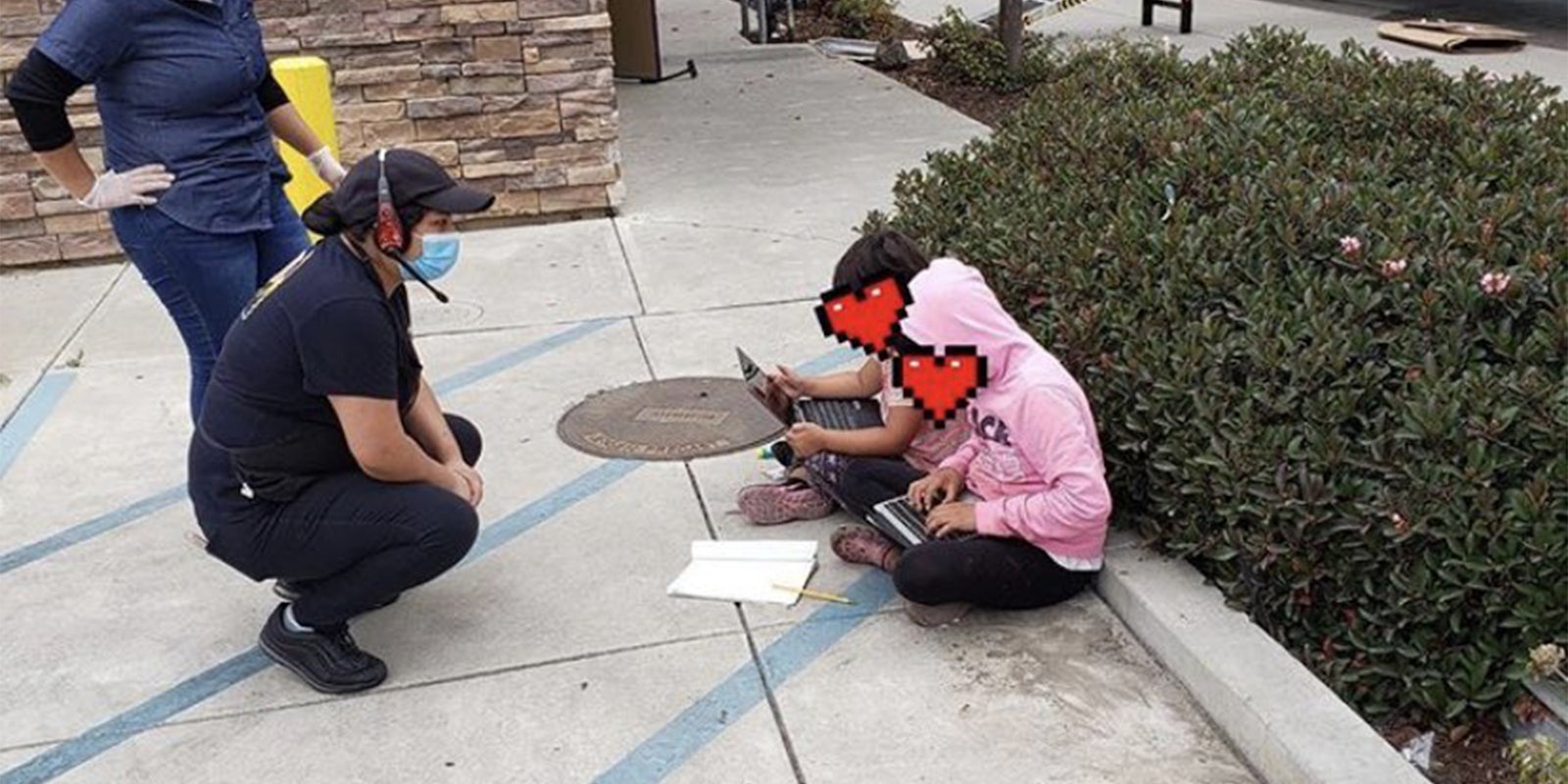A harrowing photo has gone viral on social media showing two Salinas City, California Elementary School District students sitting outside of a local Taco Bell to capture Wi-Fi to attend their virtual classrooms.
The photo is heaping more attention to the digital divide‘s realities as schools continue with distance learning.
The district acknowledges concerns about internet access for students and told KION it provided an internet hotspot to the family of the two girls and will offer additional hotspots to families in the district.
“The digital divide is very real, and delays in receiving needed technology are a statewide concern, we are grateful the State is making technology a priority and look forward to receiving these hotspots in our District,” said Amy Ish, president of the board.
Once the photo went viral, the local community pulled together to resource Wi-Fi locations for those in need by creating and sharing hotspot maps and providing new areas as they become available via Twitter.
According to the United Nations, roughly half the world’s population—46%—is not connected to the internet. People in the least developed countries are at least connected; however, digital divides subsist in better-connected countries. The Pew Research Center says that one in five school-aged children in the United States doesn’t have computer access or high-speed internet at home.
The race/class intersection is more profound when considering statistics with Latino communities like those in Salinas and around the country in the COVID age.
Even before COVID-19 hit the U.S., a Pew Research Center study showed that 57% of Hispanic adults said they own either a desktop computer or laptop, compared to 82% of whites. Roughly 25% of Hispanics surveyed stated they had “smartphone-only” access to the internet.
An April survey by SOMOS revealed nearly 40% of Latinos did not have broadband internet access at home; 32% did not have a computer.
Eva Longoria, an actress and active advocate for the Latino community, told CBS: “Outside of the crisis, the Latino community already suffers from inequity. The effects of these hardships are going to continue to produce exponentially. We’re going to have a lot of cleaning up to do.”


